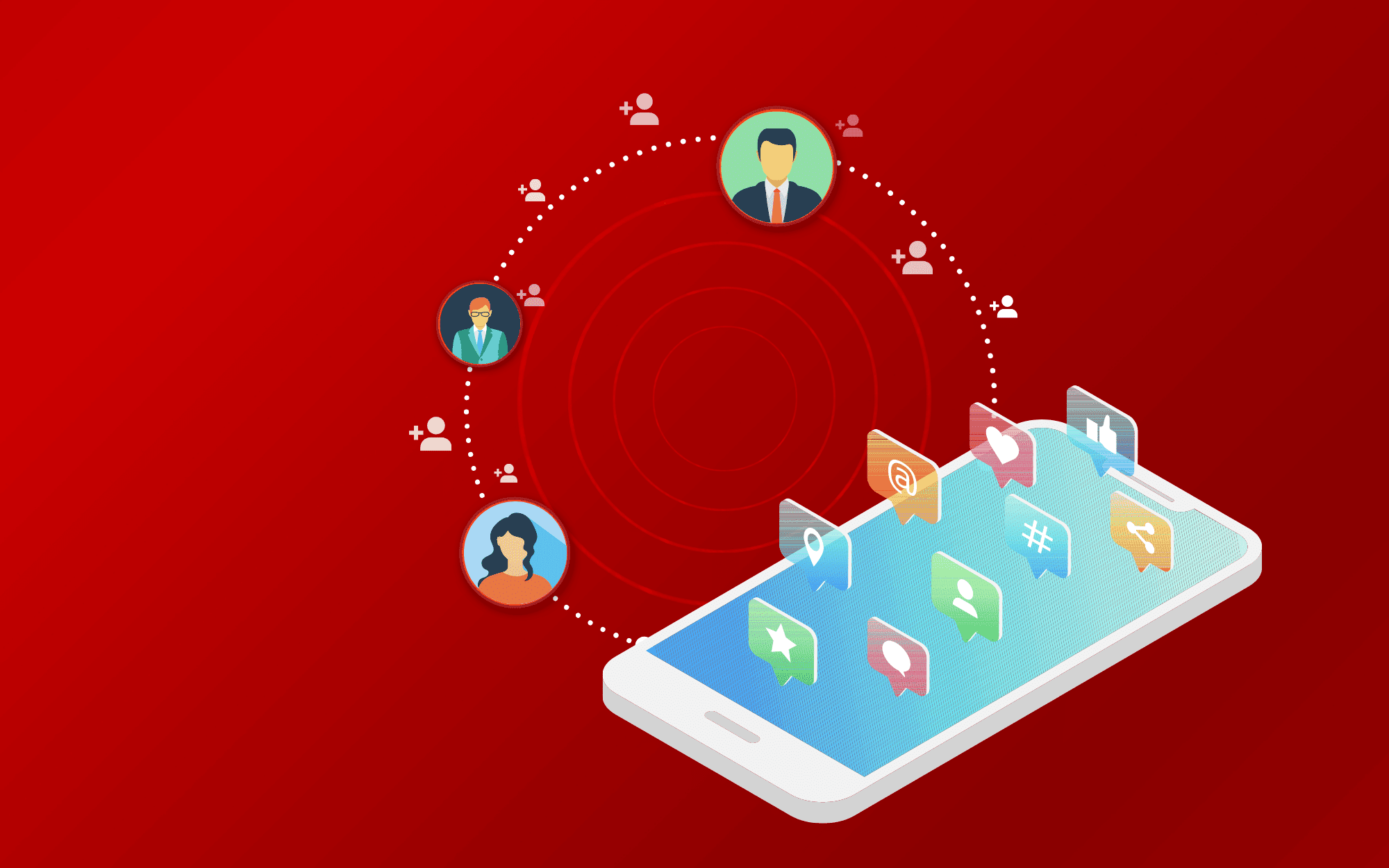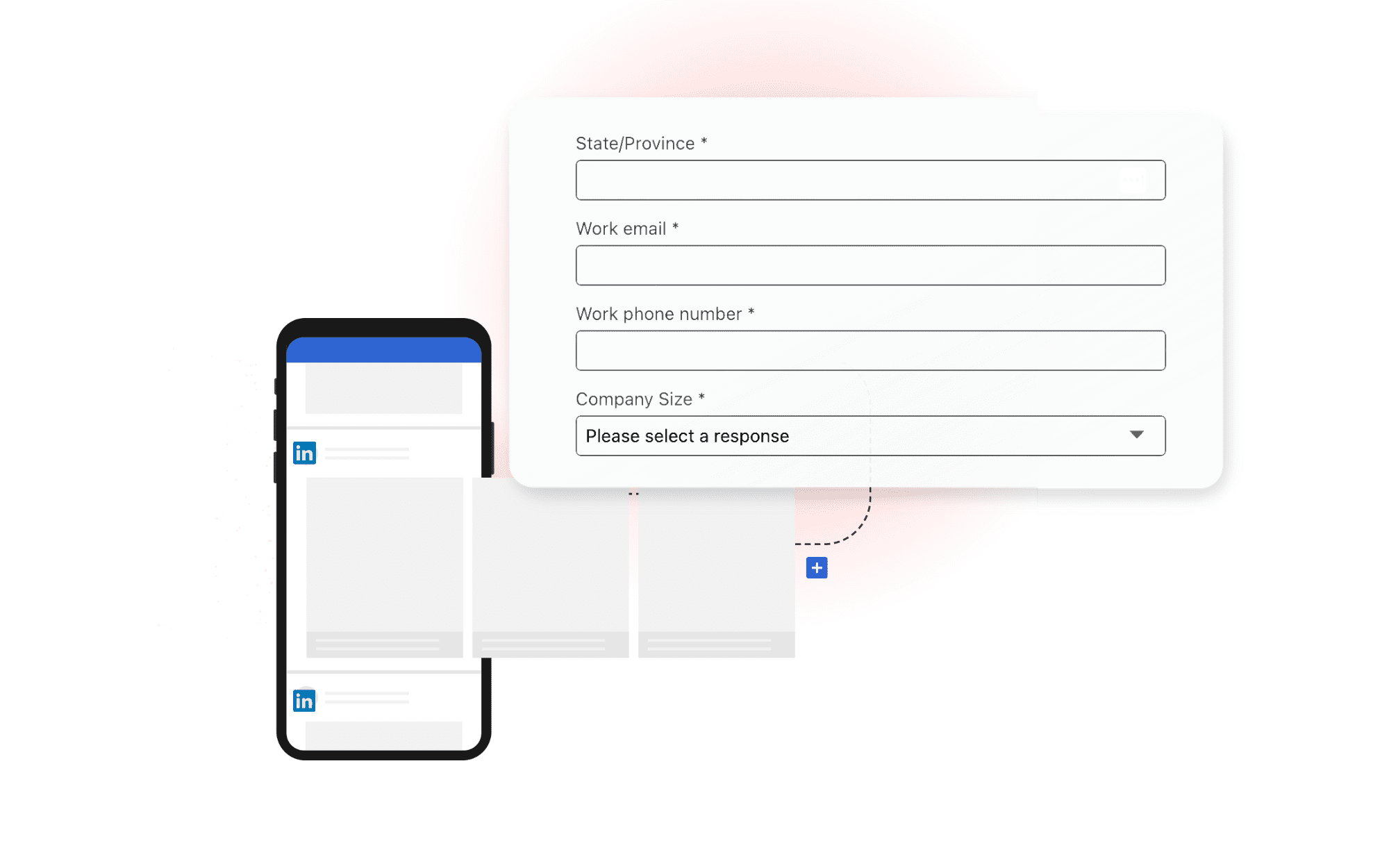

LinkedIn is one of the largest global professional platforms with 66.8 million active users in the United States and 810 million worldwide. While many people think of the social media channel as an outlet to network and share content with like-minded experts in similar industries, it’s also a great tool for lead generation—both outbound and inbound.
Throughout this blog, we’ll cover the following topics:
What Is LinkedIn Lead Generation?
LinkedIn lead generation is an inbound and outbound lead generation tactic that uses the social media platform to generate interest in your product or service offering from potential buyers within your target market.
How to Generate Leads on LinkedIn
If you’re considering using LinkedIn for lead generation, here are some ways to get started:
Find Prospects With LinkedIn Sales Navigator
LinkedIn Sales Navigator is a paid LinkedIn extension where sales and marketing teams can find qualified prospects for their sales pipeline. This extension enhances the already existing capabilities of the platform and allows growing businesses to accelerate their lead generation process.
One of the best features of LinkedIn Sales Navigator is the Advanced Lead Search function, which allows sales development representatives (SDRs) and marketing specialists to enter your ideal customer profile to find the most qualified leads. This extension allows lead generation teams to build customized lists, giving you the chance to create audience segments based on location, buyer persona, and other targeting parameters. Additionally, the Advanced Lead Search function gives SDR and marketing teams an idea of who the key decision-maker is of a prospective business and notifies them if and when a decision-maker changes at a company.
LinkedIn Sales Navigator can be easily integrated with your company’s CRM platform for a streamlined sales and marketing process. CRM software is more than a customer relationship management program—it also lets your SDR and marketing teams target the right leads at the right time. Integrating LinkedIn Sales Navigator with your CRM helps sales teams grow your pipeline and effectively move leads through the sales funnel.
Optimize Your Business LinkedIn Page
When using LinkedIn for B2B sales, your business LinkedIn page has to be optimized for easy navigation and user engagement. Like a company website, a business LinkedIn page should show what you do, where you’re located, how people can contact you, and why decision-makers should trust you.
It’s a great hub for LinkedIn users to learn about your company, and it’s also a great space to establish brand credibility. With a business LinkedIn page, social media campaign managers can:
- Share relevant content that aligns with the pain points of your target market
- Practice social selling and drive LinkedIn users to your website solutions page
- Respond to custom questions prospects or customers have about your company
- Promote new job opportunities that are available within your company
Maximize Your Personal LinkedIn Profile
While having an optimized LinkedIn company page is essential for generating leads, so is a well-developed personal LinkedIn profile. As social beings, people love putting a face with a company because it adds a personal touch to the potential relationship.
Whether it’s a business owner or an influencer within the company, an engaging and active personal profile is essential for using LinkedIn as a generating tool. Here are some ways to start maximizing your personal LinkedIn profile for lead generation:
- Upload a professional yet welcoming headshot
- Include a job title that clearly defines your role within the company
- Attach a header image that reflects your company’s brand voice
- Showcase your industry expertise in your “About” summary
- Highlight relevant marketing collateral under the “Featured” tab
- Share original and repurposed content for maximum engagement
Join Relevant LinkedIn Groups
LinkedIn offers various groups for like-minded professionals to interact and engage with each other’s profiles. Joining LinkedIn groups that align with your industry and interests is a great way to spread your brand voice where you may not be able to organically through the LinkedIn feed.
However, it’s crucial you don’t come off too strong with selling-focused content when you initially join LinkedIn groups because it could likely turn off potential buyers. Like any other lead generation campaign, start each conversation with broad questions or insight into industry best practices. Once a prospect asks more specific questions about your company, you can start selling your company’s product or service offerings.
Take Advantage of LinkedIn Advertising
Lead generation LinkedIn ads are great for targeting potential buyers who are actively looking for your company’s product or services. Here are the different ways B2B marketing teams can use LinkedIn for lead generation:
- Sponsored content: Like other social media ad campaigns, LinkedIn’s sponsored ad content runs on the feeds of potential buyers in your target audience. This sponsored content can include a single image, video, or carousel ad.
- InMail message ads: LinkedIn InMail messaging ads are unique compared to other social media advertising opportunities. With InMail messaging ads, you have the opportunity to directly message decision-makers to open up a conversation about your company. This strategy is considered an outbound sales development tactic.
- Lead gen forms: LinkedIn lead gen forms are a great way to generate inbound leads because they allow decision-makers to submit their information directly within their LinkedIn feed, rather than being directed to a landing page. Many businesses use lead gen forms to encourage top-of-funnel users to download an educational guide or e-book that’s relevant to their job position or industry.
- Dynamic ads: Dynamic ads appear alongside a LinkedIn user’s feed rather than in the feed itself. These lead-generation LinkedIn ads often encourage users to follow your LinkedIn business page, drive them to a landing page, or download marketing collateral.

Connect With Referrals From Clients
When you get referrals from satisfied customers, consider how you want to approach them in the first place. While you could call or email them, you could also connect with them on LinkedIn or send an InMail message explaining why you’re contacting them.
During the initial point of contact, lead the conversation by saying that your mutual connection referred them to your business. Starting the discussion by mentioning the mutual connection encourages them to accept your connection invite or respond to your InMail message.
Once you introduce your company and how you learned about the referral, you can send the new prospect relevant information about your company with top-of-funnel pieces of marketing collateral and blog content. If they see the value in your company’s products or services, you can then follow up with the lead and nurture the relationship until they’re ready to purchase.
LinkedIn InMail Lead Generation Best Practices
To get the most significant ROI from an outbound LinkedIn lead generation strategy, you must:
- Reach Out to High-Level Stakeholders
- Know What Industries in Your Target Market Use LinkedIn
- Send a Reasonable Number of Messages to Decision-Makers
- Apply Other Marketing Tactics in Addition to LinkedIn
- Have a LinkedIn Lead Generation Campaign Process
- Test Different Messaging to See What Clicks With Prospects
Reach Out to High-Level Stakeholders
Believe it or not, most LinkedIn responses come from high-level stakeholders, such as company owners, founders, and C-level executives. While it may sound intimidating to message these stakeholders, they’re the most important decision-makers in sales funnels. And if they’re willing to give your company the time of day to learn more about your business, then it’s worth simply messaging them to explore where there could be a potential business opportunity.
Know What Industries in Your Target Market Use LinkedIn
Certain business growth tactics work better in some industries than others, and LinkedIn lead generation is no different. From our experience, a few industries that we’ve seen the most responses from are:
- Facility services
- Software
- Insurance
- Solar and environmental services
- Logistics
If you want to target these specific industries, LinkedIn is a great platform for connecting with decision-makers and pitching your company’s product or service offerings.
Send a Reasonable Number of Messages to Decision-Makers
LinkedIn can be tricky for lead generation because while you don’t want to be invasive of their space, you also don’t want to be too hands off. As a best practice, our outbound SDRs send a total of four messages to a prospective decision-maker, which includes the first message included in the initial connection request.
From our experience, we’ve seen many prospects respond and engage after the first connection which opens up the floor for conversation. However, if they don’t respond after the first message, we see decision-makers respond after the third because that’s when we send them case studies or references from businesses in similar industries or markets.
Apply Other Marketing Tactics in Addition to LinkedIn
Like any approach to lead generation, it’s important to connect with prospects through a variety of platforms. In addition to calling no-show or rescheduled LinkedIn sales appointments, our SDRs also make warm calls to prospects who’ve expressed interest but haven’t solidified a time to speak with a sales executive. If they’re not ready to take the next steps in the buyer’s journey, this is a good time to talk one-on-one with a decision-maker to see when would be a good time to follow up.
Have a LinkedIn Lead Generation Campaign Process
If you want to create a LinkedIn lead generation campaign that yields results, you need to have a streamlined process in place.
Each LinkedIn lead generation campaign starts with establishing which employee profiles you want to use to interact with prospects. When selecting a profile to use, choose an individual who has a fully developed profile, such as an updated headshot, brand-focused banner, an accurate job title and description, and a well-versed “About” section.
Once a primary account is selected, it’s time to pick the industries you want to target through the platform. Then, you put all the messaging into LinkedHelper, a software that helps SDR and marketing teams create messaging sequences that are personalized to new connections and prospects on LinkedIn.
After messaging is added to LinkedHelper, schedule sequences to make sure each message is sent at the appropriate time. Then, the responses start and it’s up to you to consistently check the LinkedIn account profile to continue the conversation and schedule sales meetings.
Test Different Messaging to See What Clicks With Prospects
Since there are so many different buyer personas within target markets, test different messaging to see what they resonate with most. If you see that your new responses are going over well, it may be worth adding it to your list of sales messaging ideas.
For example, if someone responds to an inquiry by saying “Nice to meet you,” you can respond with something that highlights the industry they work in. From here, you can work to continue the conversation and secure a sales appointment.
Many SDRs fear that they may be too forward with prospects by throwing out two dates and times to prospects, but this approach is effective because it shows that you don’t waste any time or beat around the bush. Even if a prospect responds with “Thanks for the message,” don’t be afraid and stop there. Keep it conversational and casually ask to connect for 15–30 minutes so they can learn about the benefits your company has to offer.
However, like every other lead generation approach, it’s important to consider the industry your SDRs are pitching. While some industries prefer a much more direct approach, others may want to build up the conversation a little bit more.
Even if you get a “no thanks” or “not right now” from a prospect, dig for more information and say something like, “I understand now isn’t a good time, when would be a better time for me to reach out?” This lets the prospect know you’re eager to talk to them and explore how there could be a potential business opportunity on the line.
Why Use LinkedIn for Lead Generation?
LinkedIn is a great lead generation tool because it allows your business to:
Reduce Your Cost Per Lead
LinkedIn presents growing companies with more leads at a lower cost per lead (CPL) compared to other social media or search engine ads. With LinkedIn, marketing teams can target prospects much more specifically, such as the particular industry they serve, their job titles, company size, and more to make sure each lead that comes their way meets your company’s qualifications.
Connect With Your Target Market
LinkedIn is another platform to build relationships with leads in the sales pipeline and guide them to the end of the sales funnel. Depending on the buyer personas of decision-makers in your target market, LinkedIn may be the most effective communication platform to generate leads and secure sales meetings.
Boost Top-of-Mind Awareness
Social media marketing is significant for boosting top-of-mind awareness with potential and ongoing customers. With LinkedIn, marketing teams have the opportunity to establish your company as a trusted thought leader in the industry and convert more LinkedIn users into inbound leads.
Key Takeaways
While many people only think of LinkedIn as a professional networking platform, it’s so much more than a social medium. Following LinkedIn lead generation tactics enables growing companies to generate inbound leads and build relationships with outbound leads.
At Abstrakt Marketing Group, our outsourced SDR teams make cold calls, send sales emails, and connect with verified decision-makers on LinkedIn to lock in sales appointments for our clients. Additionally, our inbound marketing specialists create engaging website copy and social media content for clients’ LinkedIn business pages. And we know how effective our process is for clients—it’s the same process we use to grow our own book of business.
If you need a team to help you implement the best outbound LinkedIn lead generation tactics for business growth, contact the sales and marketing experts at Abstrakt!



